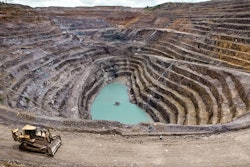
In the world of lean, just-in time manufacturing, purchasing raw materials or commodities at the right price and ensuring their delivery at the right time is a critical success factor. All the six-sigma black belts in the world cannot make a manufacturing business profitable if they procure major input materials at the wrong price.
This need for precision management of the supply chain has, rightly, elevated the role of the procurement and supply chain throughout manufacturing—and indeed, non-manufacturing—sectors. But it hasn’t necessarily elevated the tools needed to enable this highly interconnected, extremely time-sensitive and data-intensive global commodity supply chain.
Traditional tools that cover the supply chain from manufacturer to consumer are undoubtedly sophisticated systems, but they can’t cover the purchasing of commodities and raw materials from suppliers with anything like the same level of sophistication. All too often managing commodities is handled in spreadsheets.
A number of ERP firms therefore are exploring ways of improving this situation by attempting to add a layer of commodity functionality to their core system. And initially it looks like an appealing solution. ERP commodity systems are proven technologies made available by vendors who have experience in an exhaustively wide range of industry sectors, business types and organizational structures—and with a huge pool of practical experience to draw on, learn from and make improvements for.
ERP also comes with promises of cost and operational efficiencies. Who wouldn’t want to save costs by adding new functionality to an existing system and benefiting from a single set of licensing, maintenance and upgrade procedures—especially when margins are tight?
But there are very real questions about the suitability of ERP for this most complex part of the supply chain, given its absence of a forward view and proactive analytics capability.
A Unique Supply Chain
At its core, an ERP system is not architected to handle the volatility, the variability and the sheer velocity of today’s commodities markets. ERP likes fixed prices and contractual certainty, and offers significant benefits when goods are bought at a fixed price, in a fixed place, and at a fixed time.
But that doesn’t describe the modern commodities business. Acquiring raw materials now is much more of a trading function. It’s no longer a case of entering into a contract for 500 bushels of wheat at $4 a bushel. Market pricing based on complex formulas now prevails, and ownership can change hands several times in transit. The final price and quantity are subject to quality, logistics, warehousing and transport. The delivered amount depends on the route, ports and vessels selected. All of which comes with significant risks that need to be managed.
The unique way that commodities are bought, sold, shipped, stored, invoiced, accounted for and valued throughout the supply chain falls outside standard ERP capabilities. For example, its accounting capability is undeniably valuable, but its inability to accurately calculate P&L by taking into account the unique quality levels and forward curves that affect pricing, contracts, settlements and inventory valuations is not.
Then there’s the variety of price types involved: un-priced, index, NPE, and other more complex pricing types and cost models must all be accounted for. The various commodities exchanges and diverse exchange types produce hourly, daily or monthly market prices that have to be taken into account. Unlike specialist commodity trading and risk management (CTRM) or commodity management systems, ERP systems struggle to create a comprehensive contract in an environment where quantity and price are not fixed.
Nor do they offer adequate support for negotiating exposure reporting or provisional invoices. Mark-to-market valuations in physical markets are too complex, and exposure calculations require new logic to be written. Core derivatives capabilities are maintained outside physicals modules, making hedging and risk management almost impossible. Perhaps most problematic of all, ERP fails to deliver the extensive compliance that executives, regulators and other stakeholders demand.
ERP simply isn’t designed to perform these functions, and it requires a mind-boggling degree of extremely costly customization and modification to handle the risk, volatility and logistics involved.
Fit for Purpose from the Outset
As the big data phenomenon parks itself firmly in the commodities world, the siren song of ERP is set to lose any remaining appeal. ERP’s strength is in integrating neatly structured data from various sources—not interpreting the swathe of unstructured formats and external sources that now inform commodities markets. The contrast with next-generation CTRM systems that handle alternative data types offer advanced techniques for visualization and statistical optimization, and produce predictive models for better decision-making are stark.
Equally stark, for firms that have attempted it, is the drag on the business caused by heavy, drawn-out changes to their core ERP architecture—and the maintenance headaches that then ensue. That’s before discussing whether the customer or the vendor is responsible for a system that produces extra costs, greater instability, slower time to market, and constraints on the core business.
The fact is that only systems designed from the outset to meet the unique and complex needs of commodities trading can do so efficiently and effectively. Commodity pricing and valuation should be the starting point for any system to be used for managing commodities. Handling all-too-common scenarios, such as changing a sales contract several times throughout its life, allocating and later de-allocating contracts to a vessel, changing destination ports, and moving the pricing between shipments, are second nature in a CTRM system. They aren’t in ERP, which makes them either impossible or extremely tedious to perform.
ERP vendors promise greater visibility over all operations. What they don’t say about extending their product to managing commodities—but which commodities businesses are increasingly vocal about—is that any planned economies of scale soon disappear as the reality of poorly understood requirements, high customization costs, counterintuitive workflows and lengthy timelines come crashing in. What all too many businesses have discovered is that relying on such an unstable and ungainly Franken-system in their commodities supply chain is the very definition of a false economy.
















